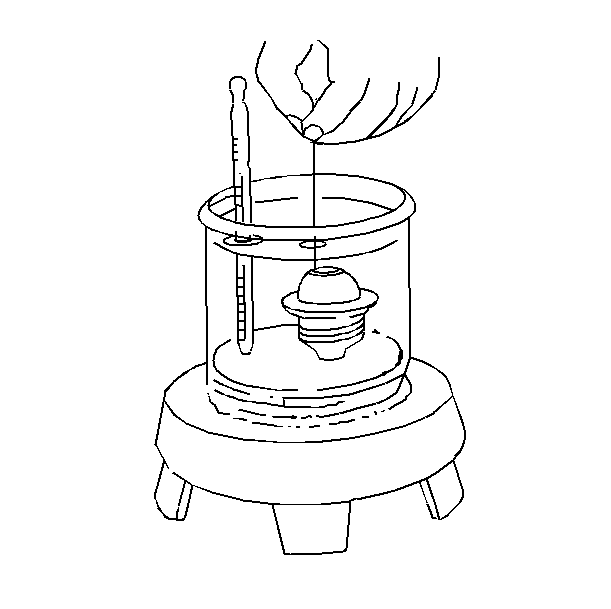Thermostat Diagnosis Thermostat Installed
Step | Action | Value(s) | Yes | No |
|---|---|---|---|---|
NOTE: The temperature stick is a pencil-like device that has a wax material containing certain chemicals which melt at a given temperature. Use the temperature sticks to determine a thermostat's operating temperature by rubbing 87°C (188°F) and 97°C (206°F) sticks on the coolant outlet. The marks made by the sticks should melt when coolant temperatures reach 87°C (188°F) and 97°C (206°F), respectively. These temperatures are the normal operating range of the thermostat. | ||||
1 |
Is there coolant flow before the mark melts? | -- | ||
2 | The problem is caused from something other than the thermostat. Refer to Engine Overheating . Does the engine warm up properly? | -- | -- | System OK |
3 |
Is the engine still overheating? | -- | -- | System OK |
Thermostat Diagnosis Thermostat Removed
Thermostat Testing Procedure

- Check the operation of the thermostat by hanging the thermostat on a hook in a 33% glycol solution.
- Completely submerge the thermostat in a glycol solution. The solution should be 11°C (22°F) above the temperature indicated on the thermostat valve.
- Thoroughly agitate the solution. Under these conditions, the thermostat valve should open.
In order to check if the thermostat valve is opening properly, do the following test:
In order to check if the thermostat valve is closing properly, do the following test:
- Completely submerge the thermostat in a glycol solution. The solution should be 6°C (10°F) below the temperature indicated on the thermostat valve.
- Thoroughly agitate the solution. Under these conditions, the thermostat valve should close completely.
